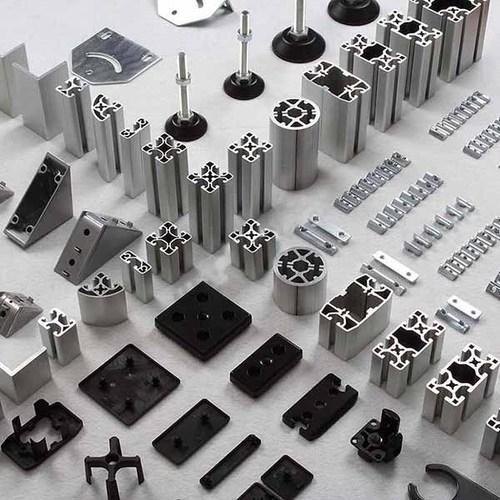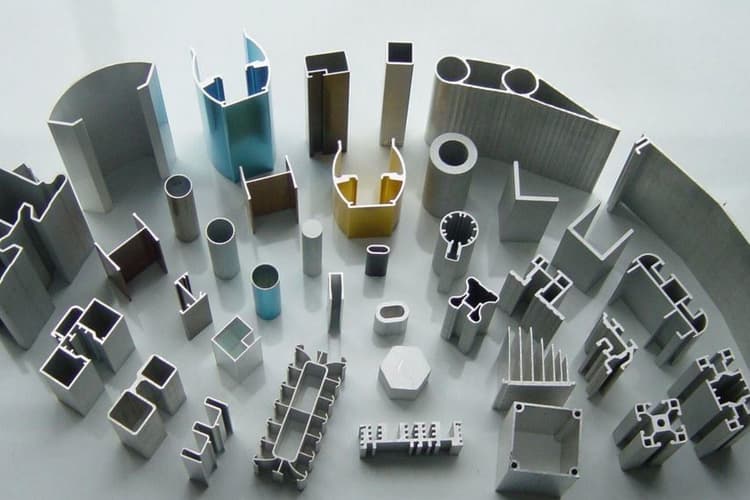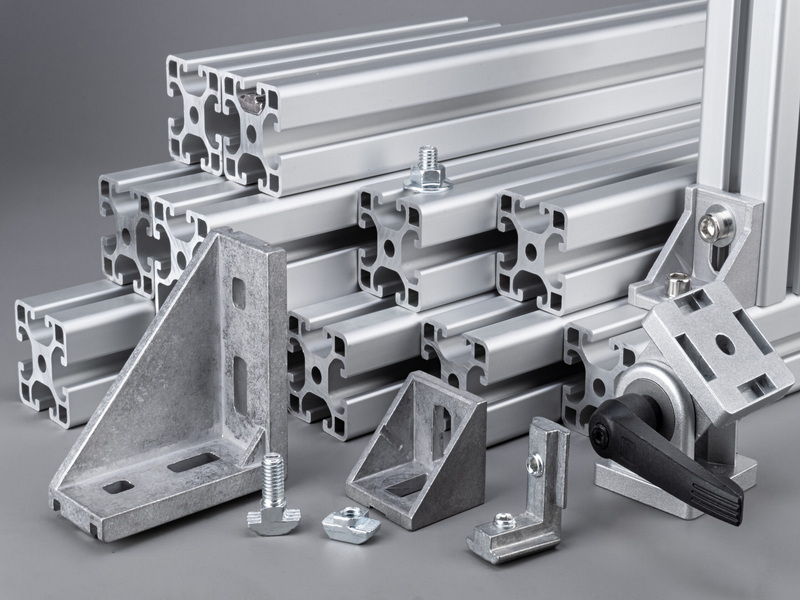Content Menu
● Introduction
● Understanding Aluminum Extrusion
>> The Benefits of Aluminum Extrusion
● Key Considerations When Designing Custom Aluminum Extrusions
>> Material Selection
>> Profile Design
>> Tolerances and Specifications
>> Surface Finish
>> Machining and Fabrication
>> Cost Considerations
>> Sustainability
● Applications of Custom Aluminum Extrusions
● Conclusion
● Related Questions
>> 1. What are the most common alloys used in aluminum extrusion?
>> 2. How does the aluminum extrusion process impact the final product?
>> 3. What factors should be considered when selecting a surface finish for aluminum extrusions?
>> 4. Can custom aluminum extrusions be recycled?
>> 5. How do tolerances affect the performance of aluminum extrusion parts?
Introduction
Aluminum extrusion is a manufacturing process that involves shaping aluminum alloy into a desired cross-sectional profile. This technique is widely used in various industries due to its versatility, lightweight nature, and strength. Custom aluminum extrusions are particularly valuable as they allow manufacturers to create specific shapes and sizes tailored to their needs. In this article, we will explore the key considerations when designing custom aluminum extrusions, focusing on the benefits, applications, and best practices to ensure optimal results.

Understanding Aluminum Extrusion
Aluminum extrusion is a process that begins with heating aluminum billets until they become malleable. The heated aluminum is then forced through a die, which shapes it into the desired profile. This process can produce a wide range of aluminum extrusion parts, from simple shapes to complex designs. The versatility of aluminum extrusion makes it suitable for various applications, including construction, automotive, aerospace, and consumer products.
The Benefits of Aluminum Extrusion
When considering custom aluminum extrusions, it is essential to understand the numerous benefits they offer:
- Lightweight: Aluminum is significantly lighter than other metals, making it an ideal choice for applications where weight reduction is crucial. This characteristic is particularly beneficial in the automotive and aerospace industries, where every ounce counts.
- Strength and Durability: Despite its lightweight nature, aluminum is incredibly strong and resistant to corrosion. This durability ensures that aluminum extrusion parts can withstand harsh environments and prolonged use without degrading.
- Design Flexibility: One of the most significant advantages of aluminum extrusion is the ability to create complex shapes and profiles. Designers can experiment with various designs, knowing that aluminum can be extruded into almost any shape.
- Cost-Effectiveness: Custom aluminum extrusions can be more cost-effective than other manufacturing methods, especially for large production runs. The efficiency of the extrusion process reduces waste and lowers overall production costs.
Key Considerations When Designing Custom Aluminum Extrusions
Designing custom aluminum extrusions requires careful planning and consideration of several factors to ensure the final product meets the desired specifications and performance requirements.
Material Selection
The first step in designing custom aluminum extrusions is selecting the appropriate aluminum alloy. Different alloys offer varying properties, such as strength, corrosion resistance, and machinability. Commonly used alloys for extrusion include 6061, 6063, and 7075. Each alloy has its unique characteristics, making it essential to choose one that aligns with the intended application.
Profile Design
The design of the extrusion profile is critical to the performance and functionality of the final product. When designing the profile, consider the following:
- Wall Thickness: The wall thickness of the extrusion affects its strength and weight. Thicker walls provide greater strength but increase weight, while thinner walls reduce weight but may compromise strength. Finding the right balance is crucial.
- Shape Complexity: While aluminum can be extruded into complex shapes, overly intricate designs may lead to difficulties in manufacturing and increased costs. Aim for a design that is both functional and manufacturable.
- Draft Angles: Incorporating draft angles into the design can facilitate easier removal from the die during the extrusion process. A draft angle of 5 to 10 degrees is typically recommended.
Tolerances and Specifications
Establishing precise tolerances and specifications is vital for ensuring that the final product meets quality standards. Tolerances refer to the allowable variations in dimensions, and they can significantly impact the performance of aluminum extrusion parts. Work closely with manufacturers to determine the appropriate tolerances based on the application and intended use.
Surface Finish
The surface finish of aluminum extrusions can affect both aesthetics and performance. Various finishing options are available, including anodizing, powder coating, and painting. Each finish offers different benefits, such as enhanced corrosion resistance or improved appearance. Consider the end-use of the product when selecting a surface finish.

Machining and Fabrication
In many cases, custom aluminum extrusions may require additional machining or fabrication after the extrusion process. This could include cutting, drilling, or milling to achieve the desired final shape. When designing the extrusion, consider how these additional processes will impact the overall design and functionality.
Cost Considerations
While custom aluminum extrusions can be cost-effective, it is essential to consider the overall budget for the project. Factors such as material costs, manufacturing processes, and finishing options can all impact the final price. Collaborate with manufacturers to identify cost-saving opportunities without compromising quality.
Sustainability
Sustainability is becoming increasingly important in manufacturing. Aluminum is a highly recyclable material, and designing custom aluminum extrusions with sustainability in mind can enhance the environmental profile of the product. Consider using recycled aluminum or designing for disassembly to facilitate recycling at the end of the product's life cycle.
Applications of Custom Aluminum Extrusions
Custom aluminum extrusions are used in a wide range of applications across various industries. Some notable examples include:
- Construction: Aluminum extrusions are commonly used in building facades, window frames, and structural components due to their strength and lightweight properties.
- Automotive: The automotive industry utilizes aluminum extrusions for components such as chassis, bumpers, and heat exchangers, contributing to weight reduction and improved fuel efficiency.
- Aerospace: In aerospace applications, aluminum extrusions are used for structural components, brackets, and support frames, where strength-to-weight ratios are critical.
- Consumer Products: Many consumer products, such as furniture, appliances, and electronics, incorporate aluminum extrusions for their lightweight and durable characteristics.
Conclusion
Designing custom aluminum extrusions involves careful consideration of various factors, including material selection, profile design, tolerances, surface finishes, and cost. By understanding the benefits and applications of aluminum extrusion, manufacturers can create high-quality products that meet specific needs. The versatility and strength of aluminum make it an ideal choice for a wide range of applications, from construction to automotive and beyond.
As the demand for sustainable and efficient manufacturing processes continues to grow, custom aluminum extrusions will play an increasingly important role in various industries. By following best practices and collaborating with experienced manufacturers, businesses can leverage the advantages of aluminum extrusion to create innovative and effective solutions.

Related Questions
1. What are the most common alloys used in aluminum extrusion?
The most common alloys used in aluminum extrusion include 6061, 6063, and 7075. Each alloy has unique properties that make it suitable for different applications.
2. How does the aluminum extrusion process impact the final product?
The aluminum extrusion process allows for the creation of complex shapes and profiles, which can enhance the functionality and aesthetics of the final product.
3. What factors should be considered when selecting a surface finish for aluminum extrusions?
When selecting a surface finish, consider factors such as corrosion resistance, aesthetics, and the intended use of the product.
4. Can custom aluminum extrusions be recycled?
Yes, aluminum is highly recyclable, and custom aluminum extrusions can be designed with sustainability in mind to facilitate recycling at the end of their life cycle.
5. How do tolerances affect the performance of aluminum extrusion parts?
Tolerances refer to the allowable variations in dimensions, and they can significantly impact the fit and function of aluminum extrusion parts in their intended applications.






















